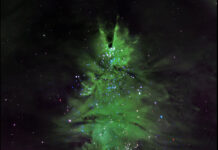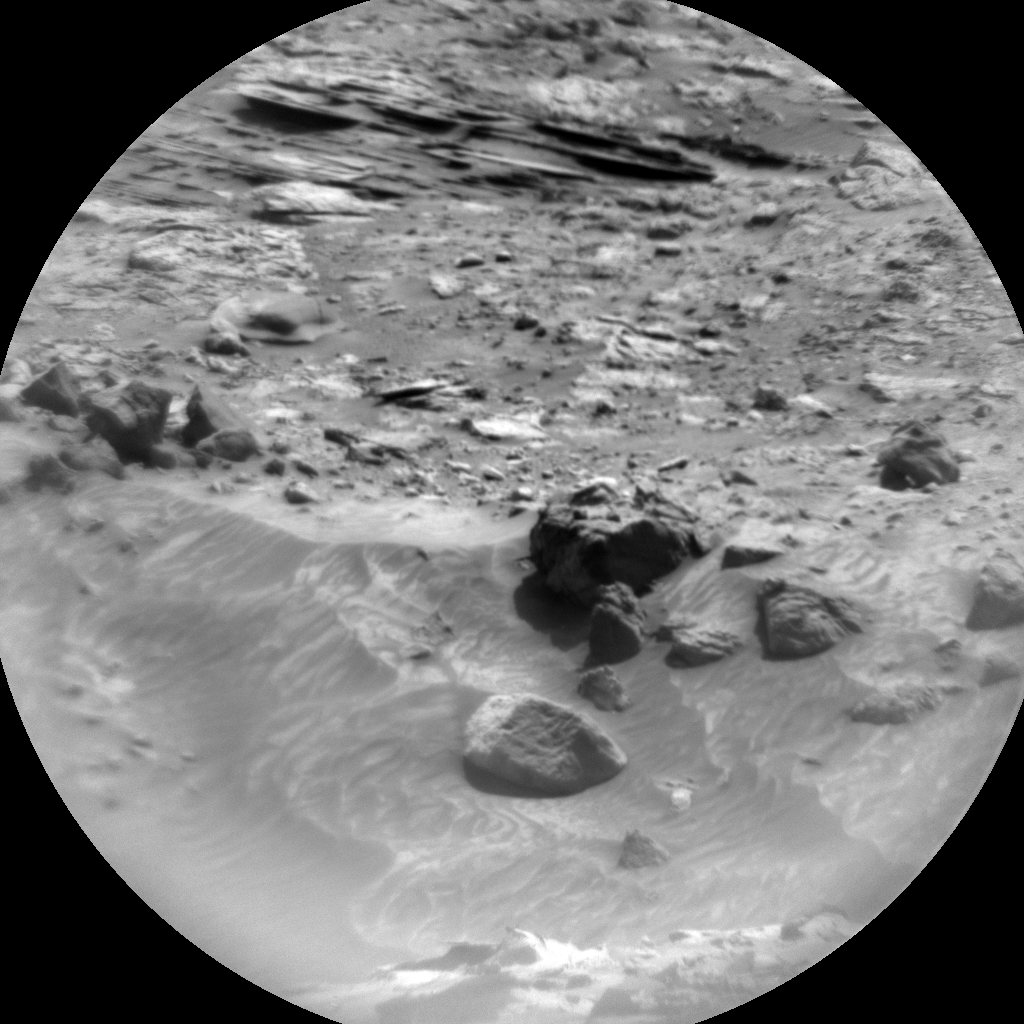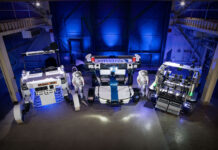Exploring Mars: Capturing the Red Planet’s Diverse Terrain
NASA’s Curiosity Rover continues to explore the Martian surface, capturing stunning images that provide invaluable insights into the planet’s diverse and intriguing terrain. The rover’s Mast Camera, commonly referred to as Mastcam, is currently taking detailed documentation images of several fascinating targets on Mars, including areas named Big Oak Flat, Calaveras, and a uniquely identified feature known simply as “trough.” In addition to these, Mastcam is capturing expansive mosaics of regions called “Basket Dome” and “Chilkoot.” These images collectively offer a comprehensive view of Mars’ varied landscape, contributing significantly to our understanding of the planet’s geological features.
A key part of Curiosity’s mission involves not just the Mastcam but also the navigation cameras, which are preparing for the rover’s next drive. These cameras, along with the often-overlooked Hazard Avoidance Cameras, or Hazcams, play a vital role in the mission’s success. The Hazcams are strategically positioned under the rover’s body, with some facing forward and others backward, acting as the rover’s eyes to ensure its safety. They help detect potential obstacles in the rover’s path, preventing accidents and ensuring the longevity of the mission.
Beyond safety, the forward-facing Hazcams also aid in planning scientific investigations. They help determine the best spots for Curiosity’s arm to reach, enabling the use of tools like the Alpha Particle X-ray Spectrometer (APXS), Mars Hand Lens Imager (MAHLI), and the drill. These instruments are crucial for conducting on-site analysis of Martian rocks and soil, helping scientists back on Earth understand the planet’s composition and history.
The images captured by the Hazcams offer a unique and striking perspective of the Martian landscape, highlighting its grandeur in a way that other cameras might not. They provide viewers with a sense of being on Mars, showcasing the sheer scale and beauty of its terrain. For those interested in seeing these stunning views, NASA’s Jet Propulsion Laboratory has published a captivating collection titled "A Day on Mars," which was released in January of this year. This collection offers a glimpse into the daily experiences of the Curiosity Rover as it navigates the challenging Martian environment.
Understanding the Role of Hazcams
The Hazcams are an integral part of Curiosity’s navigation system. Their primary purpose is to identify potential hazards on the Martian surface, such as rocks, trenches, and steep slopes, that could pose a threat to the rover’s movement. By capturing images in front of and behind the rover, the Hazcams provide real-time data that helps the mission team make informed decisions about the rover’s path.
These cameras are equipped with wide-angle lenses, allowing them to capture a broad view of the surrounding terrain. This capability is essential for assessing the rover’s immediate environment and ensuring it can safely proceed with its scientific exploration.
In addition to hazard detection, the Hazcams play a crucial role during the rover’s scientific operations. Before deploying its arm to analyze a specific target, Curiosity uses the forward Hazcams to verify that the target is within reach and that the arm can safely extend without encountering obstacles. This careful planning is vital for the success of each scientific experiment, as it ensures that the rover can accurately collect and analyze samples from the Martian surface.
The Importance of Martian Imagery
The images captured by Curiosity’s cameras are more than just photographs; they are a window into another world, providing scientists and the public with a tangible connection to Mars. Each image serves a purpose, whether it’s documenting the landscape, guiding the rover’s movements, or aiding in scientific research.
For scientists, these images are a treasure trove of data that can be analyzed to uncover the secrets of Mars’ past. By studying the planet’s surface features, scientists can infer the geological processes that have shaped it over time. This information is crucial for understanding Mars’ history and assessing its potential to have supported life.
For the public, these images ignite curiosity and inspire a sense of wonder about our neighboring planet. They allow people to experience the thrill of space exploration and understand the complexities involved in exploring distant worlds. By sharing these images, NASA fosters a sense of connection between Earth and Mars, encouraging interest in space science and technology.
Good to Know: Mars Exploration and Beyond
Mars exploration is a key component of NASA’s long-term goals for space exploration. As we continue to learn more about Mars, we pave the way for future missions and the possibility of human exploration. The data collected by Curiosity and other missions will inform the design of future spacecraft and help address the challenges of sending humans to Mars.
One of the primary objectives of Mars exploration is to determine whether the planet ever had the conditions necessary to support life. Curiosity’s findings have already provided evidence of ancient water flows and the presence of organic molecules, suggesting that Mars may have been habitable in the past. These discoveries fuel ongoing research and exploration efforts, as scientists seek to unlock the mysteries of the Red Planet.
In addition to scientific exploration, Mars missions have practical applications for technology development. The challenges of operating in the harsh Martian environment drive innovation in robotics, materials science, and autonomous systems. These advancements have potential benefits for Earth-based applications, from improving autonomous vehicles to developing more efficient energy systems.
Conclusion: The Journey Continues
The ongoing exploration of Mars by the Curiosity Rover and other missions is a testament to human ingenuity and the spirit of discovery. As we continue to capture images and gather data from the Martian surface, we move closer to answering fundamental questions about our solar system and our place within it.
For those interested in following this exciting journey, NASA’s Jet Propulsion Laboratory regularly updates its website with the latest images and findings from Curiosity. These updates provide a fascinating look at the rover’s daily activities and the scientific discoveries being made on Mars.
By sharing the story of Curiosity’s mission, we hope to inspire future generations of scientists, engineers, and explorers who will continue to push the boundaries of what is possible. As we look to the future, the exploration of Mars remains a vital part of our quest to understand the universe and our role in it.
For more Information, Refer to this article.


































